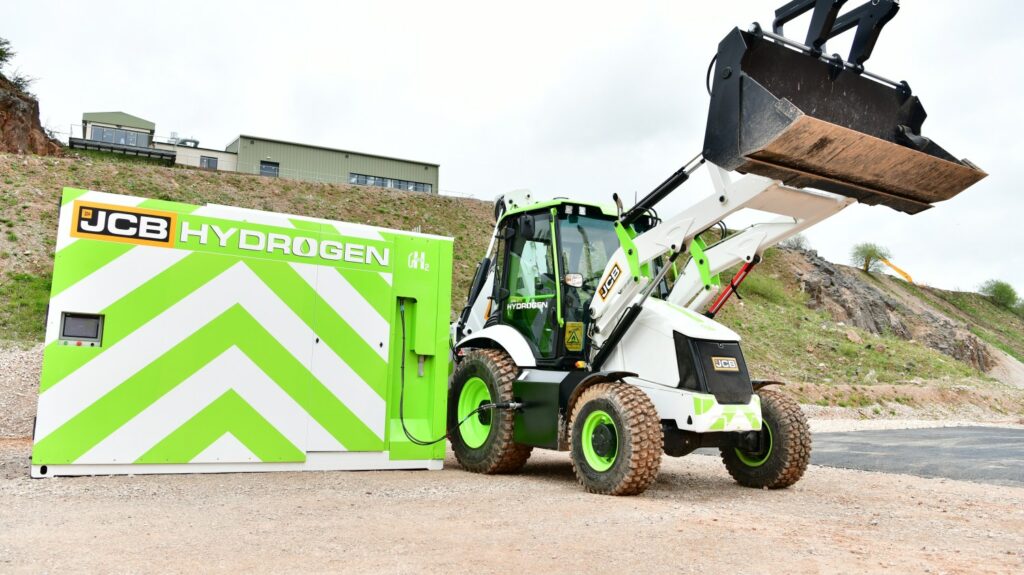Despite setting an ambitious target of 10 GW of low-carbon hydrogen production by 2030, the UK had deployed only 2 MW of green hydrogen capacity as of 2023, according to the Climate Change Committee. Into this underperforming market steps Project HySpeed—a £6.5 billion private-sector initiative aiming to build 1 GW of green hydrogen capacity by the end of the decade. But how much can a single consortium shift the trajectory of a sector that has, so far, struggled to scale?
Ambitious Claims, Modest Market Performance
Led by Jo Bamford—known for championing hydrogen combustion engines through JCB—the HySpeed coalition includes major players such as Centrica (British Gas’s parent), Johnson Matthey, Arup, Heidelberg, Tarmac, and National Gas. According to the group, the proposed 1 GW capacity would unlock £6.5 billion in private investment and create over 24,000 jobs, with at least half expected to be UK-based. While these figures are significant, they need to be contextualized against the broader market reality.
As of 2024, the UK lags far behind European leaders like Germany and the Netherlands in operational hydrogen infrastructure. The UK Hydrogen Strategy’s original 2021 target of 5 GW by 2030 was doubled to 10 GW in 2022, but progress on funding allocation, permitting, and business models remains slow. The HySpeed proposal, while notable, accounts for just 10% of that goal.
From Hype to Hardware: Can Industry Fill the Policy Gap?
The HySpeed initiative’s emphasis on green hydrogen is especially relevant given the government’s emphasis on low-carbon hydrogen, which includes both green (renewables-powered electrolysis) and blue (fossil-derived with carbon capture). With public funding for hydrogen electrolytic allocation rounds still rolling out slowly, private sector initiatives like HySpeed could become vital in bridging the execution gap.
However, experts warn that green hydrogen projects face a high hurdle without a robust demand-side mechanism. A 2023 report from Aurora Energy Research noted that electrolyzer operators in the UK still struggle with revenue uncertainty due to volatile power prices and the lack of long-term offtake agreements. Unless the government provides clearer price stabilization mechanisms—such as Contracts for Difference (CfDs)—even well-capitalized ventures could stall at FID (final investment decision).
Jobs and Investment: A Closer Look at the Numbers
The claim of 24,300 jobs tied to HySpeed raises questions of definition. Are these full-time, long-term roles in hydrogen operations, or do they include short-term construction and supply chain employment? Comparable infrastructure programs in the EU, such as the IPCEI-supported hydrogen clusters in Germany and Spain, suggest that sustained job creation hinges on integrated domestic value chains—especially in electrolyzer manufacturing and hydrogen vehicle deployment.
HySpeed’s backing by Johnson Matthey and JCB offers some reassurance here. Johnson Matthey has invested heavily in hydrogen catalyst technologies, and JCB has demonstrated working prototypes of hydrogen internal combustion engines. If these assets are deployed locally and scaled, they could anchor a broader manufacturing ecosystem. But without parallel investments in hydrogen distribution and refueling infrastructure, utilization remains uncertain.
Logistics and Infrastructure Still Pose Risks
The involvement of National Gas, the operator of Britain’s gas transmission system, points to one of the UK’s most complex hydrogen hurdles: infrastructure conversion. Most of the UK’s gas grid is not yet hydrogen-ready. While the government has funded pilot programs to blend hydrogen into distribution networks, the regulatory path for full hydrogen transmission is unclear. Moreover, planning delays and public opposition to new pipeline routes could introduce risks to HySpeed’s proposed timeline.
Industrial Decarbonization: A Natural Market Fit?
Where HySpeed may find its strongest early traction is in industrial hydrogen use—particularly for decarbonizing cement, glass, and steel manufacturing. Partners Heidelberg and Tarmac suggest a likely focus on direct supply to heavy industry, potentially bypassing some of the logistical hurdles of public hydrogen refueling stations or long-haul transport. According to the UK Industrial Decarbonisation Strategy, hydrogen could meet 20–35% of total industrial energy demand by 2050, making early infrastructure alignment crucial.
While HySpeed’s ambitions align with UK decarbonization policy on paper, its success hinges on navigating entrenched infrastructure, policy inertia, and an immature offtake market. As the government looks to publish its first full Hydrogen Allocation Round results in 2025, HySpeed’s progress—or lack thereof—could serve as a bellwether for the viability of private-led hydrogen buildout in the UK.
If the initiative secures concrete offtake agreements, lands timely regulatory approvals, and spurs domestic hydrogen equipment manufacturing, it could shift the UK from hydrogen ambition to action. But without stronger policy alignment and clearer economic signals, HySpeed risks becoming another high-profile announcement with limited downstream impact.





